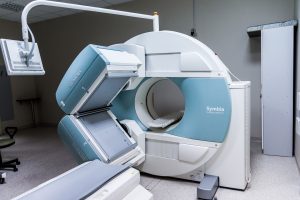Magnetic resonance imaging, better known as MRI, is a technique for scanning the human body to help identify injuries to the muscle and joint. This service is divided into two sectors – public and private MRI.
Canadian Parliament passed the Canada Health Act in 1984 which was put in place “to protect, promote and restore the physical and mental well-being of residents of Canada and to facilitate reasonable access to health services without financial or other barriers.”
This means that provinces are required to provide comprehensive care to all insured residents to be able to receive federal funding. This ensures public healthcare for residents of Canada, but private sector of healthcare is also available in Canada – also referred to as the two-tier healthcare system. Watch Aaron Caroll explain Canada’s Healthcare System below.
Do you think this is a fair system?
Bad News First…
It appears unfair that those who are richer can receive higher level of medical care although it is considered as one of the basic social needs. This split level of care could cause divergence in liberty and equality. Not only could this lead to separation between the rich and the poor, but some people could see this as an unjust society. If the government is in favour of the two-tier healthcare, it could promote unfairness since the rich would be able to seek medical attention prior to those who cannot afford to seek a private physician and technician.

Photo of a MRI Scan taken by rawpixel.
It could be quite problematic if doctors and technicians migrate towards the private sector for MRI due to an increase in demand and profitability, since this would disrupt the public system due to the lack of specialists who can operate the MRI. This means that there will be a decrease in service for those who are utilizing the publicly funded system whereas those who are relatively wealthy have access to faster care.
On the Flip Side of Things…
Imagine that there are a thousand patients waiting to receive MRI in the public healthcare system. Let’s suppose that there are a hundred patients who are capable of paying for the private service. If we prohibit the existence of private MRI, then those who are able to afford the private MRI still have to stay in line in the public healthcare system.

Photo of a MRI Scanner taken by Michal Jarmoluk.
This lengthens the wait time for everyone else in line since technicians have to see a thousand patients as supposed to nine-hundred. So, if those people can afford to pay for the private medical service, maybe, it would speed up the process for the rest of those who need MRI service. Thus, there is no critical damage done to the public system nor does it threaten it.
Some say that it could potentially benefit the society more than the damage which compensates for the inequality triggered by the divergence between the two social classes. As long as two-tier MRI is not seriously destroyed, it should be okay to allow citizens to opt for the private MRI.
Now, is your standpoint the same or has it changed in any way?
Christina Kim


